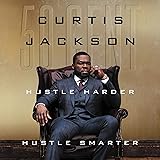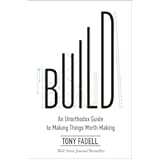The Real Estate Financial Magic Trick: Mastering Property Investment with Leverage
Many aspiring investors face a significant hurdle when venturing into real estate: how to acquire valuable properties without tying up vast amounts of personal capital. The solution, as highlighted in the video above, lies in understanding a powerful strategy often referred to as the “greatest financial magic trick in real estate.” This method, known as BRRRR (Buy, Rehab, Rent, Refinance, Repeat), allows investors to effectively recycle their initial investment, enabling continuous portfolio growth and long-term wealth creation.
Unveiling the BRRRR Strategy: A Core Real Estate Investment Method
The BRRRR strategy is a systematic approach to real estate investing that maximizes leverage and accelerates equity growth. It is particularly effective for those looking to build a substantial property portfolio over time.
This method empowers investors to add significant value to a property, stabilize its income, and then use the property’s increased value to pull out their initial investment. Consequently, this frees up capital for the next project, creating a self-sustaining cycle of acquisition and growth.
Deconstructing the “Magic Trick”: A Step-by-Step Example
Let’s delve into the mechanics of this real estate financial magic trick, using the example detailed in the video. Imagine you’re eyeing a promising property and have a total project budget of $1 million.
Step 1: Buy (Acquisition & Initial Funding)
The initial acquisition cost for the building is $700,000. To fund this, you strategically combine different capital sources, a common practice in property investment.
- **Your Contribution:** You provide $100,000 of your own capital.
- **Friends and Family:** An additional $200,000 is raised from close associates, leveraging personal networks.
- **Bank Loan:** The remaining $400,000 for acquisition comes from a traditional bank loan.
This collaborative funding approach minimizes your individual upfront risk while maximizing the potential for significant returns for all parties involved.
Step 2: Rehab (Value Addition Through Construction)
Once the property is acquired, the next crucial step is renovation and improvement. A further $300,000 is borrowed to cover construction costs and associated financing expenses.
These improvements are not merely cosmetic; they are carefully planned enhancements designed to substantially increase the property’s market value. Furthermore, quality renovations enable higher rental rates and attract more desirable tenants.
Step 3: Rent (Stabilizing Income Streams)
Upon completion of construction, the property is ready for tenants. The goal here is to “stabilize rents,” meaning you secure reliable tenants at market rates that reflect the property’s new, improved condition.
A stable rental income stream is vital as it demonstrates the property’s profitability and reduces risk for future lenders. Consequently, higher, consistent rents directly contribute to a higher overall property valuation.
Step 4: Refinance (Recapturing Capital)
This is where the true “magic” of the real estate financial magic trick unfolds. After stabilizing rents and proving the property’s enhanced income potential, you approach a new bank for a refinance.
Based on their valuation metrics, the building is now appraised at $1.5 million. The new bank is willing to lend you $1 million against this significantly increased value. With this new loan, you execute several critical financial moves:
- **Original Loan Repayment:** The initial $700,000 loan, which covered acquisition and construction, is paid back in full. The interest accrued during the construction phase was typically covered as part of the initial loan structure.
- **Investor Payout:** Your friends and family investors receive their $300,000 back, effectively realizing a 50% return on their $200,000 investment. This ensures their satisfaction and fosters trust for future collaborations.
- **Your Equity Position:** Remarkably, you are now the only remaining equity holder in the building. Your share, initially funded by only $100,000 down, is now valued at $500,000. Yet, you own the entire $1.5 million dollar building outright, with no personal capital remaining in the deal.
Step 5: Repeat (Building Your Portfolio)
While the video focuses on holding the property for life, the “Repeat” aspect of BRRRR is crucial for portfolio expansion. With your initial capital effectively recycled out of the deal, you possess the funds to embark on your next property investment. This systematic approach allows you to continuously acquire, improve, and refinance properties, building a robust real estate portfolio without needing to raise new capital for each subsequent deal.
Why This Strategy Works: The Principles of Leverage and Value Creation
The efficacy of this real estate financial magic trick is rooted in core principles of finance and property valuation. Understanding these principles clarifies why banks are willing to lend substantial amounts and how investors generate such impressive returns.
Leverage and Forced Appreciation
Banks primarily lend based on the asset’s current market value and its income-generating potential. Through strategic renovations, you are not merely maintaining the property; you are actively increasing its value, a process known as “forced appreciation.” This differs from market appreciation, which relies on external economic factors.
Consequently, by investing $300,000 in renovations that boost the property’s worth from $700,000 to $1.5 million, you’ve created significant equity. The bank’s willingness to lend $1 million against a $1.5 million valuation reflects a conservative loan-to-value (LTV) ratio, typically around 65-75%, ensuring their security.
Understanding Cash Flow and Loan Servicing
The refinancing step works because the stabilized, higher rents generate sufficient cash flow to comfortably cover the payments on the new $1 million loan. Financial institutions assess the property’s debt service coverage ratio (DSCR) to ensure it can adequately meet its mortgage obligations. This robust cash flow guarantees the long-term viability of the property as a revenue-generating asset.
Practical Considerations for Applying the Real Estate Financial Magic Trick
While the BRRRR strategy offers immense potential, successful execution demands meticulous planning and a clear understanding of practicalities. Applying this real estate financial magic trick requires more than just capital; it demands expertise and careful management.
Market Analysis and Due Diligence
Thorough market research is paramount. Identifying properties in areas with strong rental demand and potential for appreciation is critical. Furthermore, comprehensive due diligence, including property inspections and financial analysis, is essential to mitigate unforeseen risks and accurately estimate renovation costs.
Building a Strong Team
Successfully implementing the BRRRR strategy often requires assembling a reliable team. This includes experienced contractors, knowledgeable real estate agents, skilled property managers, and trusted lending professionals. Their expertise ensures the project stays on track, within budget, and achieves the desired results.
Managing Risk
Every investment carries risk, and real estate is no exception. Factors such as unexpected construction delays, cost overruns, tenant vacancies, and market fluctuations can impact profitability. Therefore, maintaining a robust contingency fund and diversifying your portfolio can help mitigate these potential challenges.
Understanding Loan-to-Value (LTV)
The Loan-to-Value (LTV) ratio is a crucial metric for lenders, representing the loan amount as a percentage of the property’s appraised value. For refinancing, banks typically prefer an LTV of 70-80%. Your ability to significantly increase the property’s value through renovation directly impacts how much capital you can extract during the refinance phase, making it a pivotal element of this real estate financial magic trick.
The Long-Term Vision: Generating Passive Income and Building Equity
The true power of this real estate financial magic trick extends beyond the immediate recapture of capital. By holding the property long-term, as mentioned in the video, you establish a reliable source of passive income. The consistent cash flow from rents not only covers the loan payments but also provides ongoing income for you.
Over time, as tenants pay down the loan, your equity in the property steadily increases. This process, coupled with potential market appreciation, significantly amplifies your wealth. This robust strategy for property investment provides both immediate financial flexibility and a solid foundation for enduring financial independence.






